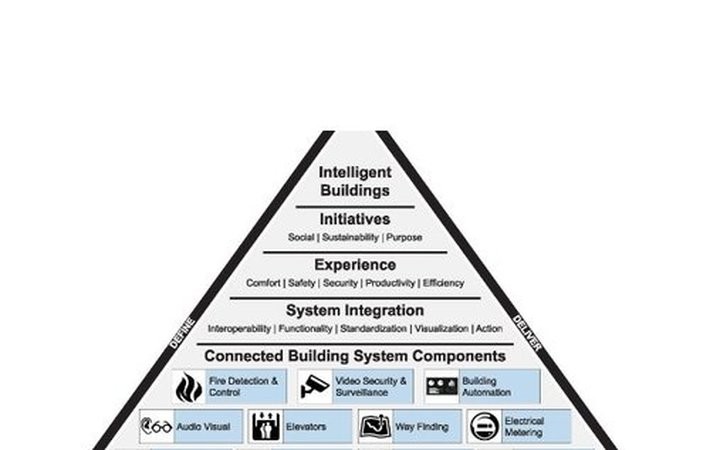
Published on 11/08/2016 | Operations
This month, I contributed to an article in Building Operating Management Magazine, "For Facility Managers, Internet of Things Changes the Game." The article describes building Internet of Things (IoT) applications that exist now and are on the way, such as the integration of mechanical equipment / components (chillers, boilers, variable frequency drives) with building automation systems (BAS) to collect data for more efficient maintenance practices, daylight harvesting to reduce energy use through the adjustment of lighting based on daylight levels, and smartphones used as security credentials at turnstiles.
The IoT is everywhere in today's news (check out some of this month's IoT headlines). In the commercial and institutional real estate space, its most often tied to the BAS's ability to monitor and control systems and their individual components through a web-based interface over the internet. For many facilities, this is practical and appropriate for their operational and maintenance needs. However, we are seeing some facilities move toward more leading edge applications.
We reach the leading edge of IoT applications when elevators, HVAC systems, and lighting controls are integrated with intelligent building platforms, moving beyond the collection of data from these devices and allowing communication across the systems to foster efficiency. Strong building data is the foundation of the intelligent building platform, which turns the collected data into building intelligence applied to foster smarter use of the built environment. Prime leading edge examples take advantage of common scheduling and occupancy / vacancy programming across these systems, as well as provide individuals with more control over their space.
Specific zones within the building can be reset to a “standby” condition during normal working hours either by time schedule or when unoccupied as sensed by a zone occupancy/vacancy sensor. During this “standby” mode, the associated HVAC equipment serving the respective zone will revert to an intermediate, relaxed temperature setpoint and the lighting can be reduced or turned off completely – all reducing energy consumption.
During off-hours, should an occupant (or occupants) enter the space, the elevator controls can signal the respective zone for which the occupant is destined and the associated HVAC and lighting controls – just in that zone - can be automatically activated to temporary occupancy. Once in the zone, the occupancy/vacancy controls will adjust the HVAC and lighting controls as the occupant(s) move through, or change, zones.
Some new lighting and temperature control applications include giving the individual occupants a mobile application to control their individual area within a restricted level. If multiple individuals occupy a zone, a voting system can receive feedback and perform analytics to provide the best overall comfort for all occupants.
So what should we expect next for BAS? We can start by expanding on these examples.
Advanced security / access controls and intelligent parking systems can enhance the occupant arrival experience by recognizing the occupant has entered / will be entering the building. When these systems are integrated into the intelligent building platform and enabled to share their data with the elevator, HVAC, and lighting controls, the elevator can be called to meet the occupant right as he or she enters the elevator lobby with the proper destination floor already entered. The HVAC and lighting controls in the zone associated with the occupant’s destination can be automatically brought up to occupied mode. No more turning on HVAC system and lighting systems at some arbitrary time, just in case.
More smart sensors are coming as well. Since sensors and microsensors are inexpensive, intelligence is going to be pushed to the edge while analytics live in the cloud. The combination will be driven by the wireless standards-based protocols that will allow more plug and play communications between disparate systems.
Over time, the IoT in the built environment will continue to facilitate the convergence of the digital and physical worlds and unveil opportunities that optimize, enhance, enable, and create new and better experiences and outcomes. Data analytics, optimized real-time response, visualization, and communication across multiple channels will result in awareness that will fuel occupant empowerment, engagement, and experiential delight while continuously improving building performance. We ultimately optimize IoT when we can use this intelligence to drive a net zero facility.
This article was originally posted on LinkedIn.